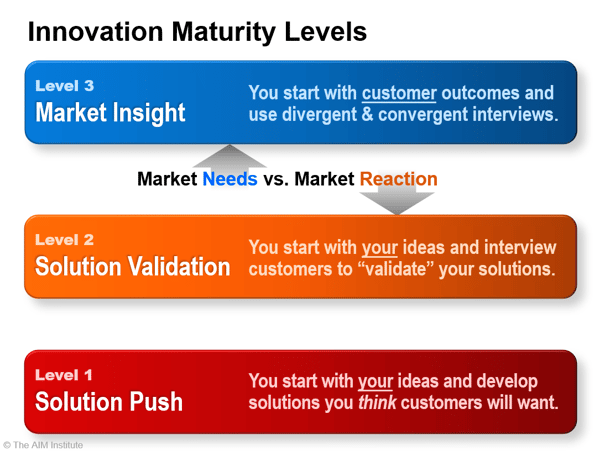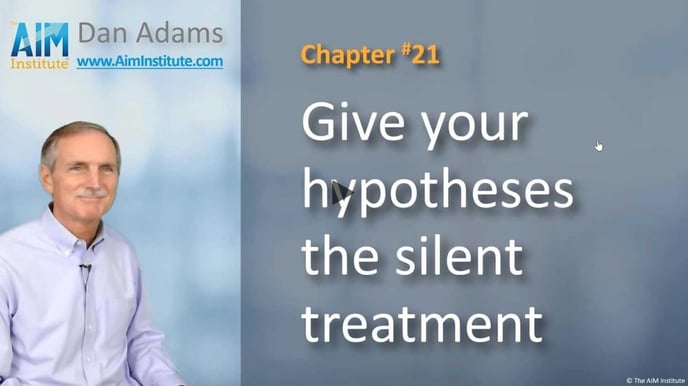Have a possible solution? Test it silently: Instead mentioning it in the interview, listen for customer outcomes it would satisfy.
What if you have some cool technology, a possible solution, or a hypothesis for how you can help customers? Your natural tendency might be to ask customers what they think about your idea. After all... that's voice-of-customer, right?
Well, sort of... but it's not very good B2B VOC. Consider three levels of innovation maturity. The first is Solution Push. Here you start with your ideas and don't even bother asking the customer about their needs. Not good at all.
The next level of maturity--Solution Validation--is starting with your ideas and interviewing customers to "validate" them. The highest level of maturity is Market Insight, where you start with customer outcomes and use divergent and convergent interviews.

The problem with Solution Validation--the approach we're examining in this article--is that you don't really understand market needs... just market reaction. To one idea. Your idea. Also, customers may tell you what they think you want to hear. And you may hear what you want to hear. This called confirmation bias--seeking and interpreting information in a way that supports our preconceived views.
So what's a better approach? Consider three choices:
- Door #1 is to push your technology. This is where you lead with a supplier solution… and frankly we’ve had decades of bad experience here.
- Door #2 is to ignore your technology. But this doesn’t seem right. We can all point to success stories based on exciting new technology.
- Door #3 is where you test your new technology “silently.” Interview as though you had no new technology.
Let's explore that last one more closely: You simply probe for as many outcomes as possible during the Discovery interview. In fact, to the customer it should not be at all obvious that you have any technology or hypotheses in mind.
Then--after the interview--simply check to see if your new technology is a good match for the customer outcomes you heard. If it is a match, you have unfiltered, unbiased support for moving forward. If not, you have two choices:
- If your mission is to serve this market, you need to find a different technology.
- If your mission is to locate a home for your new technology, you need to find a different market… so interviews will be needed in other market segments.
One last thought: If you've spent 90% of the Discovery interview letting the customer lead with their desired outcomes, it's OK for you to ask two or three questions at the end. So if they never mentioned the outcome you hoped to hear, you could always close your interview with, "Before our meeting today we were wondering if this would be of interest to you." Of course, if customers never brought up "your outcome," that probably tells you something, right?
For more, check out the 2-minute video, Give your hypotheses the silent treatment, part of the B2B Organic Growth video series by Dan Adams.
Keywords: lead witness, test silently, test hypotheses, test hypothesis, desired outcomes, possible solution, cool technology, validate ideas, validate hypothesis, validate hypotheses, innovation maturity level, solution push, solution validation, market insight, market needs, market reaction, confirmation bias

